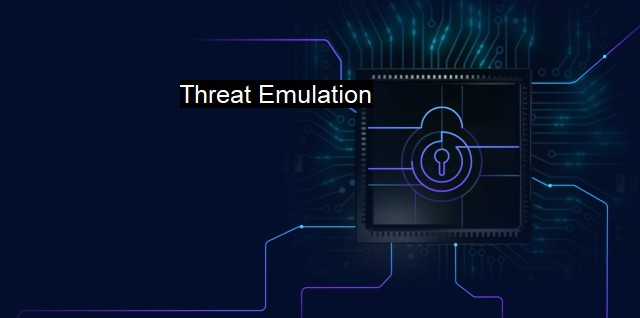What is Threat Emulation?
The Role of Threat Emulation in Safeguarding Against Evolving Cyber Threats
Threat emulation, within the context of cybersecurity software and antivirus solutions, refers to a process that is designed to emulate, simulate or recreate the tactics, procedures, and strategies of an authentic cyber-threat in a controlled environment. The key goal of threat emulation is to discover vulnerabilities, understand the consequences of any exploited weakness, and further, develop robust solutions to counteract these threats before they could potentially materialize in real-life scenarios.Threat emulation is intrinsically tied not only to the detection of potential vulnerabilities, but more significantly, it concerns itself with stress testing cybersecurity defenses and preparedness levels. By simulating real-world attacks, a comprehensive knowledge of the attack spectrum is attained that assists in developing more secure, resilient measures against potential cyber threats.
In the rapidly evolving field of cybersecurity, traditional antivirus and firewall protection systems are no longer enough to guard against the continuously evolving exploits and malware. Cyber-threats today are increasingly diverse and complex which means that old defense mechanisms are not as effective as they once used to be. Contrast this to threat emulation which allows threat actors to be predicted and their tactics to be understood with an accurate level of authenticity. By anticipating such attacks, cyber defenses can be proactive in their nature rather than reactive.
Given scenarios in threat emulation serve to illustrate previously unseen dangers within systems by creating hypothetical 'assuming the worst' outcomes. By the replication of high-impact, low-probability events, it helps businesses anticipate a broader landscape of potential threats and adjust their defenses accordingly. This is key for businesses to remain one step ahead of cybercriminals who are constantly inventing new hacking strategies.
Threat computer network emulation differs from threat simulation as it attempts to recreate an authentic digital environment in which an actual attack would potentially take place. Unlike threat simulation, which is often deterministic and doesn’t provide room for testing all parameters, threat emulation provides more flexibility due to the unpredictability of real-world situations. It simulates not only threats but also recreates the real-world environments and network interactions these threats would exploit, hence exposing underlying vulnerabilities more effectively.
For instance, an antivirus solution that uses threat emulation could examine a suspicious file by opening it in a virtual sandbox environment separate from the main system. This preemptive measure critically circumvents the potential risk of infecting the real system, diagnosing the course the threat takes which leads to better preventive measures.
The process of threat emulation continually assesses and raises the bar of the network's security threshold. The tactics, techniques, and procedures mimicked mimic the real-life tools burglars would use to infiltrate security defenses. In this case, just as detectives often recreate a burglary to understand its mechanics, cybersecurity professionals use threat emulation to understand the 'modus operandi' of a cyber criminal, thereby adjusting their defensive measures and mitigating

Threat Emulation FAQs
What is threat emulation?
Threat emulation is a cybersecurity technique used to detect and prevent malware attacks. It involves creating fake environments that mimic real computing systems to simulate and observe malware behavior, without risking the actual system.How does threat emulation work?
Threat emulation works by simulating the behavior of potential malware attacks in controlled environments. This allows security systems to identify and block malware before it has a chance to infect an actual system.What are the benefits of threat emulation?
Threat emulation provides several benefits, including the ability to detect and prevent unknown or zero-day malware attacks, as well as the ability to test and validate the effectiveness of cybersecurity measures. This technique also helps organizations to better understand the behavior of malware and refine their response strategies.What are some examples of threat emulation tools?
Some popular threat emulation tools include FireEye, Cuckoo Sandbox, and Kaspersky Security Network. These tools use a combination of virtualization, emulation, and analysis techniques to simulate and analyze potential malware behavior.| | A | | | B | | | C | | | D | | | E | | | F | | | G | | | H | | | I | | | J | | | K | | | L | | | M | |
| | N | | | O | | | P | | | Q | | | R | | | S | | | T | | | U | | | V | | | W | | | X | | | Y | | | Z | |
| | 1 | | | 2 | | | 3 | | | 4 | | | 7 | | | 8 | | |||||||